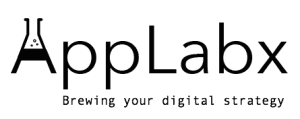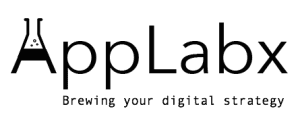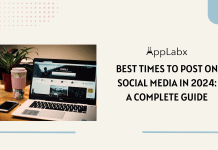Key Takeaways
- Rebranding helps businesses stay relevant by redefining their identity to align with evolving market trends and customer expectations.
- A successful rebrand involves strategic planning, clear communication, and consistent execution across all brand touchpoints.
- When done right, rebranding can boost customer loyalty, differentiate from competitors, and drive sustainable business growth.
In today’s rapidly evolving marketplace, maintaining a strong and relevant brand identity is more critical than ever. Businesses must constantly adapt to shifting consumer preferences, technological advancements, and competitive pressures to stay ahead. One of the most powerful strategies companies use to stay relevant and competitive is rebranding. But what exactly is rebranding, and how does it work for your business?

Rebranding is the strategic process of changing various elements of a brand—such as its name, logo, design, messaging, or overall identity—to better align with new market realities, business goals, or customer expectations. Unlike a simple brand refresh, which typically involves minor updates, rebranding often represents a more significant transformation designed to reposition a company in the eyes of its customers and stakeholders.
For businesses of all sizes, rebranding can be a catalyst for growth, revitalization, and differentiation. Whether a company is launching a new product line, merging with another business, recovering from negative publicity, or simply seeking to modernize its image, rebranding offers a structured approach to redefining how the brand is perceived in the marketplace. It helps businesses communicate new values, reach different audiences, and build stronger emotional connections with customers.
However, rebranding is not without its challenges. It requires careful planning, thorough research, and clear communication to ensure the transition strengthens the brand rather than confusing or alienating existing customers. When executed successfully, rebranding can lead to increased brand loyalty, improved market positioning, and enhanced business performance.
This comprehensive guide will explore the fundamentals of rebranding, why it matters, and how the process works in practical terms. You will learn about the different types of rebranding, the key steps involved, potential risks, and how to overcome common obstacles. Additionally, we will examine real-world examples of successful rebranding efforts to illustrate how businesses have transformed their identities to thrive in competitive environments.
By the end of this article, you will have a clear understanding of what rebranding entails and how your business can leverage this powerful strategy to achieve long-term success. Whether you are considering a rebrand or simply want to learn more about its impact, this guide provides the essential insights you need to make informed decisions and navigate the rebranding journey confidently.
But, before we venture further, we like to share who we are and what we do.
About AppLabx
From developing a solid marketing plan to creating compelling content, optimizing for search engines, leveraging social media, and utilizing paid advertising, AppLabx offers a comprehensive suite of digital marketing services designed to drive growth and profitability for your business.
AppLabx is well known for helping companies and startups do rebranding.
At AppLabx, we understand that no two businesses are alike. That’s why we take a personalized approach to every project, working closely with our clients to understand their unique needs and goals, and developing customized strategies to help them achieve success.
If you need a digital consultation, then send in an inquiry here.
What is Rebranding and How It Works for Your Business
- What is Rebranding?
- Why Businesses Consider Rebranding
- The Rebranding Process: Step-by-Step Guide
- How Rebranding Impacts Your Business
- Common Challenges in Rebranding and How to Overcome Them
- Tips for a Smooth Rebranding Process
1. What is Rebranding?
Rebranding is a strategic process where a business deliberately changes its brand identity elements to better reflect its current values, goals, market position, or audience preferences. It goes beyond cosmetic changes and often involves a fundamental shift in how the brand is perceived.
Types of Rebranding
- Visual Rebranding
- Changes to visual elements like logo, color palette, typography, packaging.
- Example: Airbnb’s 2014 logo redesign to a simpler, more versatile “Bélo” symbol.
- Purpose: To modernize appearance and appeal to a broader audience.
- Strategic Rebranding
- Changes to brand messaging, mission, vision, and market positioning.
- Example: Old Spice shifted from an outdated “dad brand” to a youthful, humorous persona in 2010.
- Purpose: To target new demographics or redefine brand purpose.
- Complete Rebranding (Overhaul)
- Combination of visual and strategic rebranding, often including name change.
- Example: Dunkin’ Donuts rebranded as Dunkin’ in 2018 to emphasize beverages beyond donuts.
- Purpose: To reflect business evolution or expand product offerings.
Key Elements of Rebranding
| Element | Description | Example |
|---|---|---|
| Brand Name | Changing or updating the company’s name | Google’s parent company rebranding from “Google Inc.” to “Alphabet Inc.” in 2015 |
| Logo & Visual Identity | Modifying logo, colors, and overall design | Mastercard’s shift to a simplified, flat logo in 2016 |
| Brand Messaging | Updating slogans, tone of voice, and key messages | Nike’s consistent “Just Do It” messaging evolution over decades |
| Market Positioning | Changing the target audience or value proposition | Burberry’s move from traditional to luxury fashion market in early 2000s |
| Customer Experience | Adjusting product or service delivery to match new brand values | Starbucks introducing digital ordering as part of modernization |
Differences Between Rebranding, Brand Refresh, and Brand Repositioning
| Strategy | Definition | Scope | When to Use |
|---|---|---|---|
| Rebranding | Fundamental changes to brand identity and strategy | Broad (name, logo, messaging) | When the brand no longer aligns with business goals or market demands |
| Brand Refresh | Minor updates to visual identity without changing core values | Visual (colors, fonts, logo tweaks) | To modernize appearance while maintaining brand equity |
| Brand Repositioning | Changing brand perception or target market without major visual changes | Messaging and market focus | To enter new markets or change consumer perception without full rebrand |
Why Rebranding Is More Than Just a Logo Change
- Involves a comprehensive evaluation of brand strategy.
- Impacts customer perceptions, market positioning, and competitive advantage.
- Requires alignment across marketing, sales, product development, and customer service.
- Example: When Pepsi redesigned its logo in 2008, the change was part of a larger strategy to appeal to younger consumers with a fresher, more dynamic image.
Real-World Examples of Rebranding
- Apple Inc.
- From “Apple Computer, Inc.” to “Apple Inc.” in 2007.
- Shifted focus from computers to consumer electronics and services.
- Impact: Broadened brand appeal and market share.
- Weight Watchers to WW
- Rebranded in 2018 to “WW” emphasizing wellness, not just weight loss.
- New messaging centered on overall health and lifestyle.
- Result: Attracted a wider, health-conscious audience.
Rebranding Matrix: When and How to Rebrand
| Trigger Event | Type of Rebranding Needed | Business Impact | Example |
|---|---|---|---|
| Mergers and Acquisitions | Complete Rebranding | Unified brand identity across entities | Verizon’s rebranding after AOL merger |
| Negative Reputation or Crisis | Strategic Rebranding | Restore trust and reshape perception | BP after Deepwater Horizon spill |
| Market Expansion | Visual or Strategic Rebranding | Appeal to new markets | Dunkin’s shift to Dunkin’ brand |
| Outdated Brand Identity | Brand Refresh or Visual Rebrand | Modernize image to stay relevant | Mastercard logo simplification |
| New Product Lines or Services | Strategic or Complete Rebranding | Reflect expanded offerings | Old Spice shift to younger audience |
2. Why Businesses Consider Rebranding
Rebranding is a significant strategic decision that can redefine the future of a business. While it requires investment and careful execution, the benefits of rebranding can outweigh the risks when aligned with clear business goals. Below are the key reasons why businesses should consider rebranding.
Adapting to Market Changes and Consumer Expectations
- Evolving Consumer Preferences
- Consumer tastes and expectations constantly evolve, especially with emerging technologies and cultural shifts.
- Rebranding allows businesses to stay relevant and appeal to new generations.
- Example: Instagram updated its logo and app design in 2016 to reflect its evolving functionality and attract a younger audience.
- Technological Advancements
- Businesses need to reflect innovation and modernity in their brand to remain competitive.
- Companies in tech sectors often rebrand to communicate cutting-edge solutions.
- Example: IBM’s evolution from hardware to cloud and AI services involved subtle rebranding to emphasize innovation.
Responding to Business Growth or Structural Changes
- Mergers and Acquisitions
- Combining two or more companies often necessitates a unified brand to represent the new entity.
- Rebranding helps integrate company cultures and streamline market presence.
- Example: After its merger with Time Warner, AOL rebranded its media business to better represent its diversified portfolio.
- Expansion into New Markets or Product Lines
- When entering new geographic markets or diversifying product/service offerings, rebranding can better communicate this evolution.
- Example: Dunkin’ Donuts shortened its name to Dunkin’ in 2018 to emphasize beverages beyond just donuts.
Overcoming Negative Brand Perception
- Crisis Management and Reputation Repair
- Brands facing scandals or negative publicity may rebrand to regain trust and signal a fresh start.
- Example: BP underwent extensive rebranding efforts after the Deepwater Horizon oil spill to rebuild its corporate image.
- Combatting Brand Stagnation
- An outdated or stale brand can cause consumer disengagement.
- Rebranding revitalizes interest and positions the business as dynamic and customer-focused.
- Example: Old Spice’s humorous rebranding campaign shifted its image from “old-fashioned” to a modern, youthful brand.
Differentiating from Competitors
- Market Saturation
- In highly competitive industries, rebranding can provide differentiation and unique positioning.
- Helps businesses stand out through distinct identity and messaging.
- Example: Airbnb’s rebrand in 2014 introduced a unique symbol representing “belonging,” distinguishing it in the hospitality market.
- Shifting Competitive Landscape
- As competitors evolve, rebranding enables a company to stay ahead or reposition in response.
- Example: Netflix shifted from DVD rentals to streaming and original content with a corresponding brand evolution.
Enhancing Customer Engagement and Loyalty
- Aligning Brand with Customer Values
- Modern consumers increasingly favor brands with authentic, socially responsible values.
- Rebranding can realign business identity with these expectations.
- Example: Patagonia emphasizes sustainability, which is central to its brand positioning and customer loyalty.
- Improving Customer Experience
- A refreshed brand identity can be part of a broader initiative to enhance customer service and engagement.
- Example: Starbucks frequently updates store design and digital experience alongside branding efforts to deepen customer connection.
Table: Common Triggers for Rebranding and Associated Benefits
| Trigger Event | Purpose of Rebranding | Business Benefit | Real-World Example |
|---|---|---|---|
| Market Expansion | Adapt brand for new demographics | Access to new customer segments | Dunkin’ Donuts → Dunkin’ |
| Negative Publicity | Restore trust and credibility | Rebuild customer confidence | BP post Deepwater Horizon |
| Merger or Acquisition | Unify brand identity | Streamlined communication and culture | Verizon after AOL merger |
| Technological Innovation | Signal modernization | Attract tech-savvy customers | IBM’s service evolution |
| Brand Stagnation | Refresh image | Renew customer interest | Old Spice 2010 campaign |
| Competitive Differentiation | Stand out in saturated market | Increase market share | Airbnb’s 2014 rebrand |
Matrix: Rebranding Benefits vs. Business Goals
| Business Goal | Rebranding Benefit | Expected Outcome |
|---|---|---|
| Increase Market Relevance | Align brand with current trends | Higher brand engagement and sales growth |
| Expand Customer Base | Broaden appeal with new identity | Entry into new markets and demographics |
| Repair Brand Image | Change perception through new messaging | Recovery of brand trust and loyalty |
| Differentiate from Competitors | Unique brand identity and positioning | Stronger competitive advantage |
| Support Business Diversification | Reflect new products or services | Clear communication of expanded offerings |
| Improve Customer Loyalty | Reinforce values and experience | Increased repeat business and advocacy |
Case Study: Successful Rebranding to Meet Business Goals
- Airbnb (2014)
- Challenge: Airbnb wanted to grow globally while emphasizing community and belonging.
- Action: Rebranded with a new logo (“Bélo”) symbolizing connection and shared experiences.
- Outcome: Enhanced global recognition, differentiated from traditional hotels, and increased user trust.
- Old Spice (2010)
- Challenge: Perceived as outdated and appealing to older demographics.
- Action: Launched a humorous and bold marketing campaign alongside brand redesign.
- Outcome: Attracted younger consumers and significantly increased sales.
Rebranding is a critical strategic tool for businesses aiming to adapt, grow, and remain competitive in dynamic markets. Understanding the reasons behind rebranding helps leaders make informed decisions about when and how to embark on this complex yet rewarding process.
3. The Rebranding Process: Step-by-Step Guide
Rebranding is a complex and strategic endeavor that requires careful planning and execution. This step-by-step guide outlines the essential phases businesses should follow to ensure a successful rebranding that resonates with their audience and aligns with their goals.
Step 1: Conduct a Brand Audit and Market Research
- Assess Current Brand Position
- Analyze brand assets: logo, messaging, website, social media, and customer perception.
- Identify strengths, weaknesses, opportunities, and threats (SWOT analysis).
- Example: Coca-Cola regularly audits its brand to maintain global relevance.
- Gather Customer Insights
- Conduct surveys, focus groups, and interviews to understand customer attitudes.
- Analyze competitor brands and market trends.
- Use data to identify gaps and opportunities for differentiation.
- Evaluate Market Conditions
- Study industry shifts, emerging technologies, and cultural trends.
- Align rebranding objectives with business growth or market expansion goals.
Step 2: Define New Brand Strategy and Positioning
- Clarify Brand Purpose and Vision
- Develop a compelling mission statement reflecting the company’s future direction.
- Define core brand values that resonate internally and externally.
- Identify Target Audience
- Refine or redefine customer personas to focus marketing efforts.
- Consider new demographic or geographic segments for expansion.
- Craft Unique Value Proposition (UVP)
- Clearly articulate what sets the brand apart.
- Ensure the UVP is relevant and meaningful to the target audience.
- Example:
- Slack’s rebranding focused on improving user experience and simplifying collaboration tools to appeal to modern workplaces.
Step 3: Develop Visual Identity and Messaging
- Design New Visual Elements
- Logo redesign or refresh reflecting new brand personality.
- Update color palettes, typography, and imagery to ensure consistency.
- Example: MasterCard simplified its logo in 2016 for a modern and digital-friendly look.
- Create Brand Voice and Messaging Framework
- Define tone, language style, and key messages.
- Ensure messaging aligns with brand values and appeals to target customers.
- Prepare brand guidelines to maintain consistency across channels.
- Test Designs and Messaging
- Use focus groups or A/B testing to gather feedback.
- Adjust designs or messages based on consumer response.
Step 4: Plan and Execute the Implementation
- Develop a Detailed Rollout Plan
- Set timelines for internal and external launches.
- Identify all touchpoints: website, packaging, advertising, social media, and customer service.
- Communicate Internally First
- Engage employees through training and internal communications.
- Equip teams with brand materials and messaging to become brand ambassadors.
- Launch Externally
- Use coordinated marketing campaigns across digital, print, and broadcast media.
- Monitor customer reactions and media coverage closely.
- Example:
- Airbnb’s 2014 rebrand involved a phased rollout, including app updates, website redesign, and PR events to maximize impact.
Step 5: Monitor, Measure, and Adjust
- Track Key Performance Indicators (KPIs)
- Brand awareness and recognition
- Customer engagement and sentiment
- Sales and market share growth
- Social media reach and feedback
- Collect Continuous Feedback
- Use surveys and social listening tools to assess brand reception.
- Identify issues or confusion early and respond proactively.
- Make Adjustments as Needed
- Refine messaging or visuals based on feedback.
- Address any gaps in customer experience linked to rebranding.
Table: Rebranding Process Overview
| Step | Key Activities | Purpose | Example |
|---|---|---|---|
| 1. Brand Audit & Research | SWOT analysis, customer surveys, competitor analysis | Understand current position & market | Coca-Cola’s regular brand audits |
| 2. Strategy & Positioning | Define vision, UVP, target audience | Establish new brand direction | Slack’s user-focused repositioning |
| 3. Visual & Messaging | Logo redesign, messaging framework | Create consistent brand identity | MasterCard logo simplification |
| 4. Implementation | Rollout planning, internal/external launch | Execute brand transition smoothly | Airbnb phased rollout |
| 5. Monitor & Adjust | KPI tracking, feedback collection | Ensure rebrand success & optimization | Continuous improvement |
Chart: Timeline of a Typical Rebranding Project
| Phase | Duration | Key Activities |
|---|---|---|
| Brand Audit | 2-4 weeks | Research, SWOT, customer insights |
| Strategy Development | 3-6 weeks | Vision setting, audience definition |
| Visual Design | 4-8 weeks | Logo creation, guidelines, messaging |
| Implementation | 6-12 weeks | Internal training, marketing campaigns |
| Monitoring & Adjust | Ongoing post-launch | KPIs, feedback, refinement |
Final Notes on the Rebranding Process
- Rebranding is a cross-functional effort involving marketing, leadership, product, and customer service teams.
- Transparency and communication throughout the process mitigate risks of confusion or resistance.
- Patience and flexibility are essential; rebranding effects may take time to fully materialize in the market.
4. How Rebranding Impacts Your Business
Rebranding is a powerful strategic move that can significantly influence various aspects of your business. Its impact extends beyond mere aesthetics to affect customer perception, market positioning, financial performance, and organizational culture. Understanding these impacts is essential for businesses considering rebranding as a growth or recovery strategy.
Impact on Customer Perception and Loyalty
- Shaping Customer Expectations
- A successful rebrand can reset how customers perceive your business, aligning expectations with your current values and offerings.
- Clear communication of the new brand identity reduces confusion and builds trust.
- Example: Domino’s Pizza rebranded in 2009 to focus on improving food quality and customer experience, which changed customer perception from a low-quality brand to a reliable choice.
- Building Emotional Connections
- Rebranding offers the opportunity to tell a fresh story that resonates emotionally with customers.
- Brands that align with consumer values tend to foster greater loyalty.
- Example: Patagonia’s consistent focus on environmental sustainability in its rebranding efforts has strengthened its connection with eco-conscious consumers.
- Risk of Customer Alienation
- Poorly managed rebranding can alienate loyal customers who feel disconnected from the new brand identity.
- It is critical to maintain elements that preserve brand equity.
- Example: Gap’s 2010 logo change faced backlash, leading to a swift reversal due to negative customer reaction.
Influence on Market Positioning and Competitiveness
- Differentiation in Crowded Markets
- Rebranding allows businesses to distinguish themselves clearly from competitors.
- It highlights unique value propositions that attract target audiences.
- Example: Airbnb’s 2014 rebrand introduced a new logo and messaging focusing on “belonging,” setting it apart from traditional hospitality providers.
- Market Expansion Opportunities
- New branding can help penetrate different demographics or geographic markets by appealing to broader or niche segments.
- Example: Dunkin’ Donuts rebranded to Dunkin’ in 2018 to emphasize beverages and attract younger consumers beyond its traditional donut base.
- Enhanced Perceived Value
- A modernized and professional brand image can justify premium pricing and increase perceived product or service quality.
- Example: Burberry repositioned itself from a traditional trench coat maker to a luxury fashion brand, elevating pricing power and exclusivity.
Financial and Business Performance Impacts
- Revenue Growth and Market Share
- Effective rebranding often leads to increased sales and market share by attracting new customers and retaining existing ones.
- Example: Old Spice’s 2010 rebranding campaign helped double its sales by appealing to a younger demographic.
- Cost Considerations and ROI
- While rebranding requires investment in design, marketing, and rollout, the return on investment can be significant when it revitalizes the brand.
- Tracking KPIs post-rebrand is critical to measure success and optimize strategies.
- Potential Risks and Mitigation
- Misaligned or rushed rebranding can cause temporary sales drops or brand confusion.
- Comprehensive planning and phased implementation help mitigate risks.
Effects on Internal Culture and Employee Engagement
- Reinforcing Corporate Identity
- Rebranding offers a chance to unify employees around a refreshed vision and mission.
- A strong internal brand boosts morale and productivity.
- Example: IBM’s strategic rebranding in the 1990s helped transform employee mindset from hardware-centric to solutions-oriented.
- Training and Communication Challenges
- Employees need clear understanding and buy-in to effectively represent the new brand.
- Ongoing training and communication are essential during transition.
Table: Summary of Rebranding Impacts
| Impact Area | Positive Effects | Potential Risks | Example |
|---|---|---|---|
| Customer Perception | Increased loyalty, refreshed image | Alienation if not managed carefully | Domino’s 2009 food quality focus |
| Market Positioning | Differentiation, market expansion | Loss of identity in competitive space | Airbnb’s “Belonging” approach |
| Financial Performance | Sales growth, higher perceived value | High cost, ROI uncertainty | Old Spice sales surge |
| Internal Culture | Employee alignment, morale boost | Resistance or confusion | IBM’s 1990s transformation |
Matrix: Measuring Rebranding Impact Using Key Performance Indicators (KPIs)
| KPI | Measurement Method | Desired Outcome | Frequency of Monitoring |
|---|---|---|---|
| Brand Awareness | Surveys, social media analytics | Increase in brand recall and recognition | Monthly |
| Customer Sentiment | Customer feedback, reviews, social listening | Positive sentiment growth | Weekly |
| Sales Volume | Sales reports, revenue tracking | Increase in sales post-rebrand | Monthly |
| Market Share | Industry reports, competitor analysis | Growth in market share | Quarterly |
| Employee Engagement | Internal surveys, turnover rates | Higher engagement and lower attrition | Quarterly |
Chart: Customer Perception Shift Before and After Rebranding (Example: Domino’s Pizza)
| Perception Metric | Pre-Rebranding (2008) | Post-Rebranding (2012) |
|---|---|---|
| Customer Satisfaction (%) | 60 | 85 |
| Brand Favorability (%) | 55 | 80 |
| Repeat Purchase Intention (%) | 50 | 75 |
Understanding the multifaceted impact of rebranding allows businesses to strategically plan and implement changes that not only refresh their identity but also drive tangible growth and competitive advantage.
5. Common Challenges in Rebranding and How to Overcome Them
Rebranding is a powerful strategy but comes with inherent challenges that can undermine its success if not properly managed. Understanding these obstacles and employing effective solutions is crucial to achieving a smooth transition and maximizing the benefits of rebranding.
Challenge 1: Employee Resistance and Lack of Buy-In
- Why It Happens
- Employees may feel uncertain or disconnected from the new brand identity.
- Fear of change or loss of company heritage can cause resistance.
- Lack of clear communication often leads to misunderstanding the reasons behind rebranding.
- How to Overcome
- Involve employees early in the rebranding process through workshops and feedback sessions.
- Clearly communicate the strategic reasons and benefits of rebranding.
- Provide comprehensive training and resources to help employees embody the new brand.
- Example: IBM’s 1990s transformation included extensive internal campaigns to align employees with new corporate values.
Challenge 2: Customer Confusion and Alienation
- Why It Happens
- Sudden or drastic changes to brand identity can confuse loyal customers.
- Failure to communicate the rebranding rationale may lead to mistrust or disengagement.
- Removing familiar brand elements can disrupt customer recognition.
- How to Overcome
- Gradually introduce new branding elements alongside familiar ones during transition.
- Use multi-channel communication strategies to explain the rebranding purpose.
- Retain some core brand elements to preserve continuity and trust.
- Example: Gap’s 2010 logo change was reversed after negative feedback because customers felt alienated.
Challenge 3: Budget Overruns and Timeline Delays
- Why It Happens
- Underestimating the scope of rebranding can lead to unexpected costs.
- Complex rollouts across multiple platforms and regions require meticulous coordination.
- Delays can arise from stakeholder disagreements or design revisions.
- How to Overcome
- Develop a detailed project plan with realistic budget and timeline estimates.
- Allocate contingency funds for unforeseen expenses.
- Establish clear governance with decision-makers empowered to approve changes quickly.
- Example: Airbnb’s phased rollout minimized costly last-minute changes by testing and iterating design elements.
Challenge 4: Inconsistent Brand Implementation
- Why It Happens
- Poor internal coordination can lead to inconsistent application of new brand assets.
- Lack of clear brand guidelines causes deviation across marketing channels and touchpoints.
- Outsourced vendors or partners may not fully understand the new brand.
- How to Overcome
- Create comprehensive brand guidelines covering visual and verbal identity.
- Train all stakeholders, including external agencies, on brand standards.
- Use centralized digital asset management systems to control brand materials.
- Example: Coca-Cola’s brand guidelines ensure uniformity across global markets despite regional adaptations.
Challenge 5: Negative Market or Media Reaction
- Why It Happens
- Rebranding may be perceived as insincere or superficial by critics.
- Poorly timed rebranding during crises can worsen public perception.
- Failure to address customer feedback can amplify negative sentiment.
- How to Overcome
- Conduct market testing and focus groups before full rollout.
- Prepare crisis communication plans and respond transparently to feedback.
- Engage with influencers and media to build positive narratives.
- Example: BP’s post-spill rebranding included proactive community engagement to rebuild trust.
Table: Challenges vs. Solutions in Rebranding
| Common Challenge | Cause | Solution | Real-World Example |
|---|---|---|---|
| Employee Resistance | Fear of change, poor communication | Early involvement, clear messaging | IBM internal campaigns |
| Customer Confusion | Sudden drastic changes | Gradual rollout, multi-channel explanation | Gap’s logo reversal |
| Budget and Timeline Issues | Underestimation, complexity | Detailed planning, contingency budget | Airbnb phased rollout |
| Inconsistent Implementation | Lack of guidelines, poor training | Comprehensive guidelines, training | Coca-Cola global brand control |
| Negative Market Reaction | Insincerity perception, poor timing | Market testing, transparent communication | BP’s post-crisis rebranding |
Matrix: Rebranding Challenges and Mitigation Strategies
| Challenge | Impact on Project | Mitigation Strategy | Monitoring Indicator |
|---|---|---|---|
| Employee Resistance | Slow adoption, morale dip | Engagement programs, training | Employee feedback scores |
| Customer Alienation | Loss of customers | Communication plans, phased rollout | Customer sentiment analysis |
| Budget Overruns | Financial strain | Realistic budgeting, strict controls | Budget variance reports |
| Brand Inconsistency | Brand dilution | Brand guidelines, asset control | Brand audit results |
| Negative Publicity | Reputation damage | Crisis management, PR campaigns | Media sentiment and coverage |
Chart: Common Rebranding Pitfalls vs. Success Factors
| Pitfall | Countermeasure | Outcome |
|---|---|---|
| Rushed Implementation | Strategic phased rollout | Smooth transition |
| Ignoring Stakeholders | Inclusive communication | Broad support |
| Overlooking Brand Equity | Retaining key brand elements | Customer loyalty maintained |
| Insufficient Training | Comprehensive internal training | Consistent brand representation |
| Neglecting Feedback | Active monitoring and responsiveness | Enhanced brand perception |
Final Recommendations for Overcoming Rebranding Challenges
- Plan Thoroughly: Allocate sufficient time and resources for research, strategy, and execution.
- Engage Stakeholders: Ensure all internal and external parties understand and support the change.
- Communicate Transparently: Keep customers, employees, and partners informed at every stage.
- Monitor Continuously: Use KPIs and feedback loops to detect issues early and adjust accordingly.
- Maintain Brand Continuity: Balance innovation with respect for established brand equity.
By proactively addressing these challenges with strategic solutions, businesses can navigate the complexities of rebranding and emerge stronger, more relevant, and better positioned for long-term success.
6. Tips for a Smooth Rebranding Process
Rebranding can be a transformative experience for any business, but its success largely depends on how well the process is planned and executed. Implementing strategic best practices can minimize risks, reduce disruption, and maximize the positive impact of your new brand identity.
Tip 1: Involve Key Stakeholders Early
- Engage Leadership and Departments
- Involve executives, marketing, sales, customer service, and product teams from the start.
- Create a cross-functional rebranding committee to oversee progress.
- Example: Microsoft’s 2012 rebranding involved collaboration across departments to unify messaging.
- Gather Employee Feedback
- Conduct surveys and workshops to understand employee sentiments and incorporate their insights.
- Early involvement increases buy-in and reduces resistance.
Tip 2: Conduct Comprehensive Research and Brand Audit
- Assess Current Brand Equity
- Evaluate customer perceptions, competitor positioning, and market trends.
- Identify elements that must be retained versus those needing change.
- Example: Pepsi’s 2008 rebrand was preceded by extensive research to ensure the new logo resonated with modern consumers.
- Analyze Target Audience
- Update customer personas to reflect changing demographics or new markets.
- Align rebranding goals with audience expectations.
Tip 3: Develop Clear and Consistent Brand Guidelines
- Create Detailed Visual and Verbal Standards
- Define logo usage, color palettes, typography, tone of voice, and messaging hierarchy.
- Ensure guidelines are accessible to all internal teams and external partners.
- Train Teams and Partners
- Conduct workshops and provide resources to ensure brand consistency.
- Example: Coca-Cola’s brand guidelines are updated regularly and distributed globally to maintain consistency.
Tip 4: Plan a Phased and Coordinated Rollout
- Internal Launch Before External
- Inform and train employees before public announcement.
- Prepare customer-facing teams to communicate the rebrand effectively.
- Multi-Channel External Launch
- Coordinate website, social media, advertising, packaging, and PR campaigns.
- Consider pilot launches or regional rollouts to test reception.
- Example: Airbnb’s 2014 rebrand was rolled out in stages to ensure smooth transition and positive public response.
Tip 5: Communicate Transparently and Frequently
- Explain the Reasons and Benefits
- Share the strategic rationale behind rebranding with customers and employees.
- Address concerns proactively to build trust.
- Use Multiple Communication Channels
- Leverage emails, social media, press releases, internal newsletters, and webinars.
- Example: Slack regularly communicated changes during its brand evolution to keep users informed and engaged.
Tip 6: Monitor Performance and Be Ready to Adapt
- Track Key Metrics
- Monitor brand awareness, customer sentiment, sales, and engagement.
- Use surveys, social listening, and analytics tools.
- Gather Feedback Continuously
- Encourage feedback from employees, customers, and partners.
- Adjust messaging or design elements as needed based on insights.
Table: Summary of Tips for a Smooth Rebranding Process
| Tip | Description | Benefit | Example |
|---|---|---|---|
| Involve Stakeholders Early | Engage leadership and teams | Increased buy-in and alignment | Microsoft 2012 rebrand |
| Conduct Research & Audit | Evaluate brand equity and market | Informed strategic decisions | Pepsi 2008 logo redesign |
| Develop Brand Guidelines | Create standards for visuals & messaging | Consistency across channels | Coca-Cola brand guidelines |
| Plan Phased Rollout | Internal launch followed by external | Smooth transition and readiness | Airbnb 2014 rollout |
| Communicate Transparently | Frequent updates explaining changes | Builds trust and reduces confusion | Slack user communications |
| Monitor & Adapt | Track KPIs and adjust as needed | Optimizes brand impact | Continuous feedback cycles |
Matrix: Communication Channels vs. Audience Types
| Audience | Email Newsletters | Social Media | Press Releases | Webinars | Internal Meetings |
|---|---|---|---|---|---|
| Employees | High | Medium | Low | High | High |
| Existing Customers | High | High | Medium | Medium | Low |
| Potential Customers | Medium | High | High | Low | Low |
| Partners & Vendors | Medium | Medium | Medium | Medium | Medium |
Chart: Ideal Rebranding Communication Timeline
| Phase | Weeks Before Launch | Communication Activity |
|---|---|---|
| Awareness & Education | 8-6 weeks | Internal announcements, leadership briefings |
| Engagement & Training | 5-3 weeks | Employee training, stakeholder Q&A |
| Pre-Launch Teasers | 2-1 week | Social media teasers, press previews |
| Official Launch | Launch week | Multi-channel public announcements |
| Post-Launch Follow-up | 1-4 weeks | Feedback surveys, continuous updates |
Final Recommendations
- Stay Agile: Be prepared to pivot based on market and internal feedback.
- Maintain Brand Equity: Balance innovation with elements that customers already trust.
- Leverage Technology: Use project management tools and digital asset management systems to streamline rollout.
- Celebrate Milestones: Recognize team efforts to maintain morale and enthusiasm.
By following these practical tips, businesses can navigate the complexities of rebranding with greater confidence and achieve a successful, impactful brand transformation.
Conclusion
Rebranding is a strategic and multifaceted process that can profoundly transform how a business is perceived, how it competes in the market, and ultimately how it performs financially. As businesses grow, evolve, and respond to changing market conditions, rebranding serves as a critical tool to maintain relevance, connect with new audiences, and reinforce core values. Understanding what rebranding entails and how it works is essential for any company considering this significant step.
Throughout this article, we have explored the various dimensions of rebranding—from the types and processes involved to the numerous impacts it can have on customer perception, market positioning, and internal culture. Rebranding is not merely about changing logos or visual elements; it encompasses redefining your business’s mission, values, messaging, and overall identity. When done correctly, it has the power to rejuvenate a brand, increase customer loyalty, and open new growth opportunities.
However, rebranding is also complex and presents challenges such as managing stakeholder expectations, maintaining brand consistency, and navigating customer reactions. Careful planning, stakeholder involvement, clear communication, and phased implementation are critical to overcoming these obstacles. Successful examples from industry leaders like Airbnb, Old Spice, and IBM demonstrate that when executed thoughtfully, rebranding can be a catalyst for lasting success.
For your business, rebranding should start with a thorough brand audit and a deep understanding of your market, customers, and competition. Defining a clear brand strategy and positioning will guide the development of a cohesive visual identity and messaging framework. A well-managed rollout and continuous monitoring will ensure that your rebrand resonates positively and delivers measurable results.
In a fast-paced business environment, brands that fail to adapt risk becoming irrelevant. Rebranding offers a strategic pathway to reinvention and resilience. Whether you seek to modernize your image, target new markets, recover from reputational challenges, or differentiate from competitors, rebranding provides the structure and opportunity to achieve these goals.
Ultimately, the key to successful rebranding lies in aligning your brand identity authentically with your business vision and customer expectations. By investing in a well-planned rebranding process, your business can not only survive but thrive, building stronger connections with customers and positioning itself for sustainable growth.
If you are looking for a top-class digital marketer, then book a free consultation slot here.
If you find this article useful, why not share it with your friends and business partners, and also leave a nice comment below?
We, at the AppLabx Research Team, strive to bring the latest and most meaningful data, guides, and statistics to your doorstep.
To get access to top-quality guides, click over to the AppLabx Blog.
People also ask
What is rebranding in business?
Rebranding is the process of changing a company’s corporate image, including its name, logo, design, or messaging, to better align with its goals, target audience, or market conditions.
Why do businesses need to rebrand?
Businesses rebrand to stay relevant, attract new customers, address market changes, improve reputation, or reflect a shift in strategy or product offerings.
What are the different types of rebranding?
Common types include visual rebranding (logo, colors), strategic rebranding (mission, messaging), and complete rebranding (name, positioning, and visuals).
How long does the rebranding process take?
The rebranding timeline varies but typically ranges from 3 to 12 months depending on the scope and complexity of the changes.
What are the key steps in the rebranding process?
Key steps include brand audit, strategy development, design creation, internal and external communication, rollout, and ongoing monitoring.
How does rebranding affect customer perception?
Rebranding can refresh customer views, build loyalty, or risk confusion if not communicated clearly and executed well.
Can rebranding increase sales?
Yes, a successful rebrand can attract new customers, re-engage existing ones, and boost sales by improving brand appeal and relevance.
What is the difference between rebranding and brand refresh?
Rebranding involves fundamental changes to brand identity, while brand refresh focuses on updating visual elements without altering core values or messaging.
When is the right time to rebrand a business?
Ideal times include market expansion, product diversification, outdated brand image, negative reputation, or after mergers and acquisitions.
How much does rebranding typically cost?
Costs vary widely based on project scope, from a few thousand dollars for small brands to millions for global corporations.
What risks are involved in rebranding?
Risks include alienating loyal customers, brand confusion, high costs, and potential negative market reactions if poorly executed.
How can a business ensure a successful rebrand?
Success depends on thorough research, clear strategy, stakeholder buy-in, consistent messaging, and phased rollout with ongoing feedback.
Does rebranding affect employee morale?
It can positively impact morale if employees are engaged and informed, but poor communication may cause resistance or confusion.
What role does customer feedback play in rebranding?
Customer insights help shape a brand that resonates better and minimizes risks of alienation or misunderstanding.
How do you measure the success of a rebranding effort?
Success is measured through KPIs like brand awareness, customer sentiment, sales growth, and market share.
Can small businesses benefit from rebranding?
Yes, small businesses can gain competitive advantage, enter new markets, and revitalize their image through rebranding.
Is it necessary to change the company name during rebranding?
Not always. Name changes are only part of rebranding if it’s necessary to reflect new business directions or overcome negative associations.
What is strategic rebranding?
Strategic rebranding involves changing brand values, mission, or positioning to better align with business goals and market demands.
How does rebranding impact market positioning?
Rebranding can help a company differentiate itself, enter new markets, and clarify its unique value proposition.
What are common challenges in rebranding?
Challenges include managing costs, internal resistance, customer confusion, and ensuring consistent implementation.
How important is internal communication during rebranding?
Internal communication is critical to secure employee support and ensure consistent brand representation.
Can rebranding help recover from a damaged reputation?
Yes, rebranding can be a key strategy to rebuild trust and reposition the business positively after a crisis.
How often should a company consider rebranding?
There is no fixed timeline; companies should consider rebranding when their current brand no longer supports their business goals.
What is the role of digital marketing in rebranding?
Digital marketing amplifies rebranding efforts by engaging audiences across online platforms and driving awareness.
Can rebranding affect existing customer loyalty?
If done carefully, it strengthens loyalty; if mishandled, it risks losing customers who feel disconnected.
Should rebranding be done all at once or in phases?
Phased rollouts reduce risk, allow feedback, and enable smoother transitions.
What is visual rebranding?
Visual rebranding focuses on updating elements like logos, colors, fonts, and packaging without changing brand messaging.
How does rebranding influence competitive advantage?
It helps businesses stand out, better meet customer needs, and adapt quickly to market changes.
What is the difference between rebranding and repositioning?
Repositioning shifts brand perception within the same brand framework; rebranding involves changing fundamental brand identity elements.
Can rebranding increase a company’s market value?
Yes, by improving brand equity and market appeal, rebranding can enhance company valuation and investor interest.




































